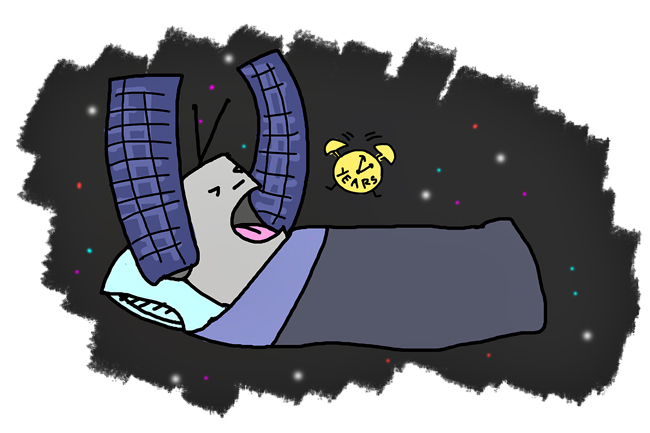After a 10-year journey and 31 months of deep-space hibernation, Rosetta — the European Space Agency’s comet-chasing spacecraft — awoke to begin the final stage of its path toward comet 67P/Churyumov-Gerasimenko. Launched in 2004, Rosetta began a journey toward 67P, but was later put into sleep mode to await its eventual date with the comet.
The mission team that oversees the comet-chaser’s journey waited anxiously for communication signals from the control room of the European Space Agency in Darmstadt, Germany. As the team huddled in tense silence waiting for the comet-chaser to phone home, Rosetta was exercising its solar panel body and reorienting its GPS system. Seven hours later, the solar-powered spacecraft determined its position in the universe and prepared its antenna for its first communication with Earth.
Rosetta sent its first message home at 9 a.m. Monday via Twitter: “Hello, world!”
This historic event marks the beginning of the final stretch toward the craft’s goal of landing on comet 67P, which is as old as Earth itself.
Rosetta shares its name with the Rosetta Stone, a slab of volcanic basalt found in 1799 that revolutionized our understanding of Egypt’s lost culture. Scientists hope the comet can provide information about the origin of life through an analysis of dust and gas both before the landing and on the surface.
Comet surfaces are rich in organic molecules, which serve as a foundation for life on Earth. Because the molecules that make up these compounds can be found on comets, scientists plan to study the origins of life through surface material. For example, scientists hope that an analysis of the surface may help to isolate a possible origin of the organic molecules that make up our DNA and RNA.
Scientists contend that, like taxi cabs, comets can act as transporters of these carbon-containing compounds, helping them to spread across the universe.
Studies of star and planet formation are also at the forefront of endeavors surrounding Rosetta. The material that formed the comet billions of years ago may provide vital clues about the early era of our solar system. The European Space Agency hails Rosetta’s mission, stating on its website that “It will allow scientists to unlock the mysteries of the oldest building blocks of our solar system: comets.”
According to StarDate Online, the UT-sponsored website of the McDonald Observatory, cameras housed in the craft will begin sending detailed pictures to Earth in May. These photos will serve to chronicle its journey, as well as scope out an ideal base for its lander in October. While these high-resolution photos are sure to end up on social media sites for the world to see, they will also serve as a medium for measuring the microscopic particles emitted from the surface of 67P.
Rosetta is designed to use the orbit of the comet to pull itself close enough to begin mapping the icy surface in August. At this time, the comet will be at perihelion, or its closest point to the sun.
Rosetta’s lander, a miniature robotic vehicle named Philae, is set to be deployed in November for an on-camera one-month driving stint on the surface of the comet until the end of the mission in December. Philae will then battle conditions of the extremely low gravity of 67P by ejecting harpoons into the surface like anchors.
If the lander’s anchors fail, Philae will be slung into space. If the landing is successful, this event will mark the first time a spacecraft has touched down on the surface of a comet, a mission in which Rosetta could truly live up to its namesake.















